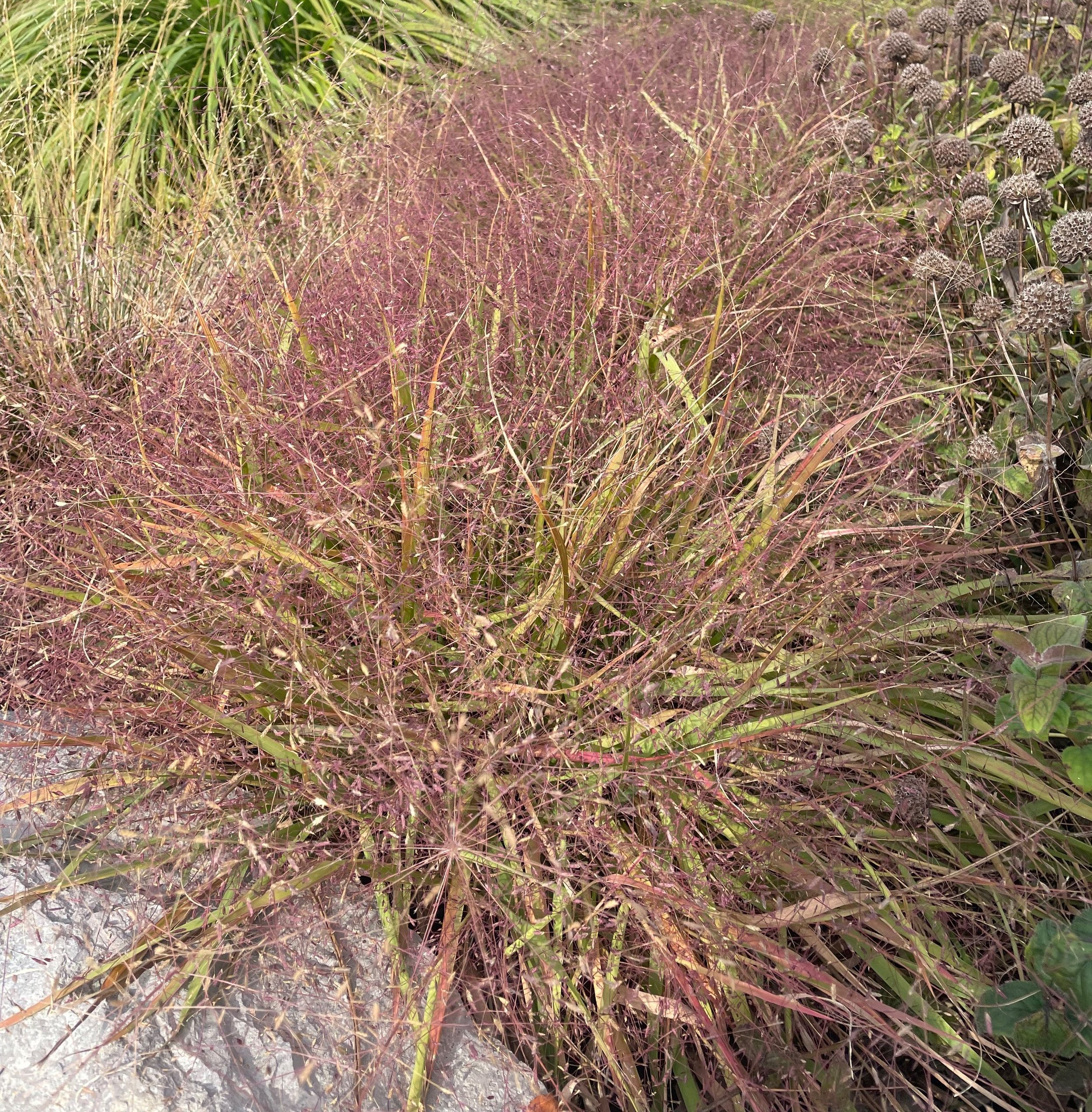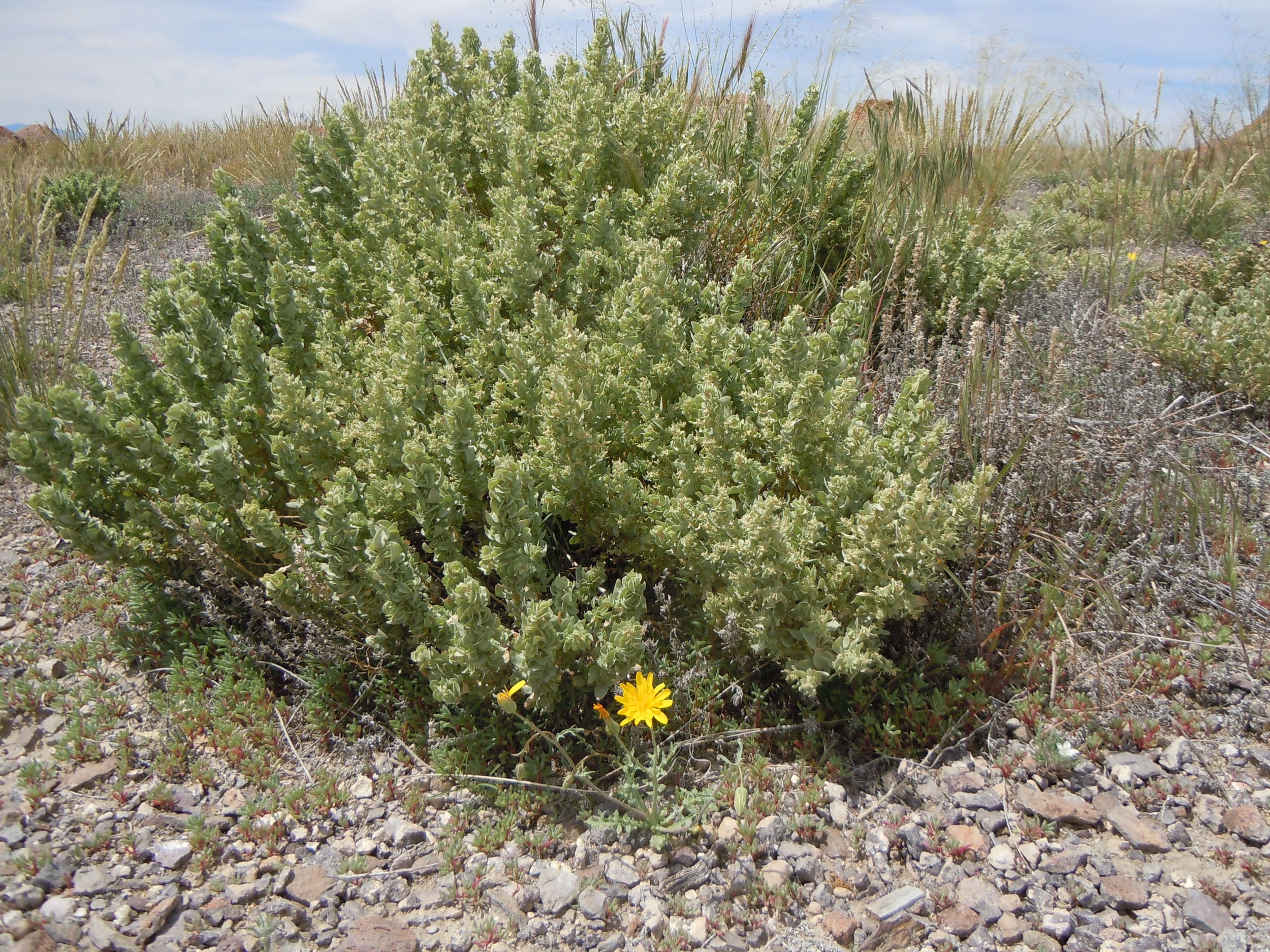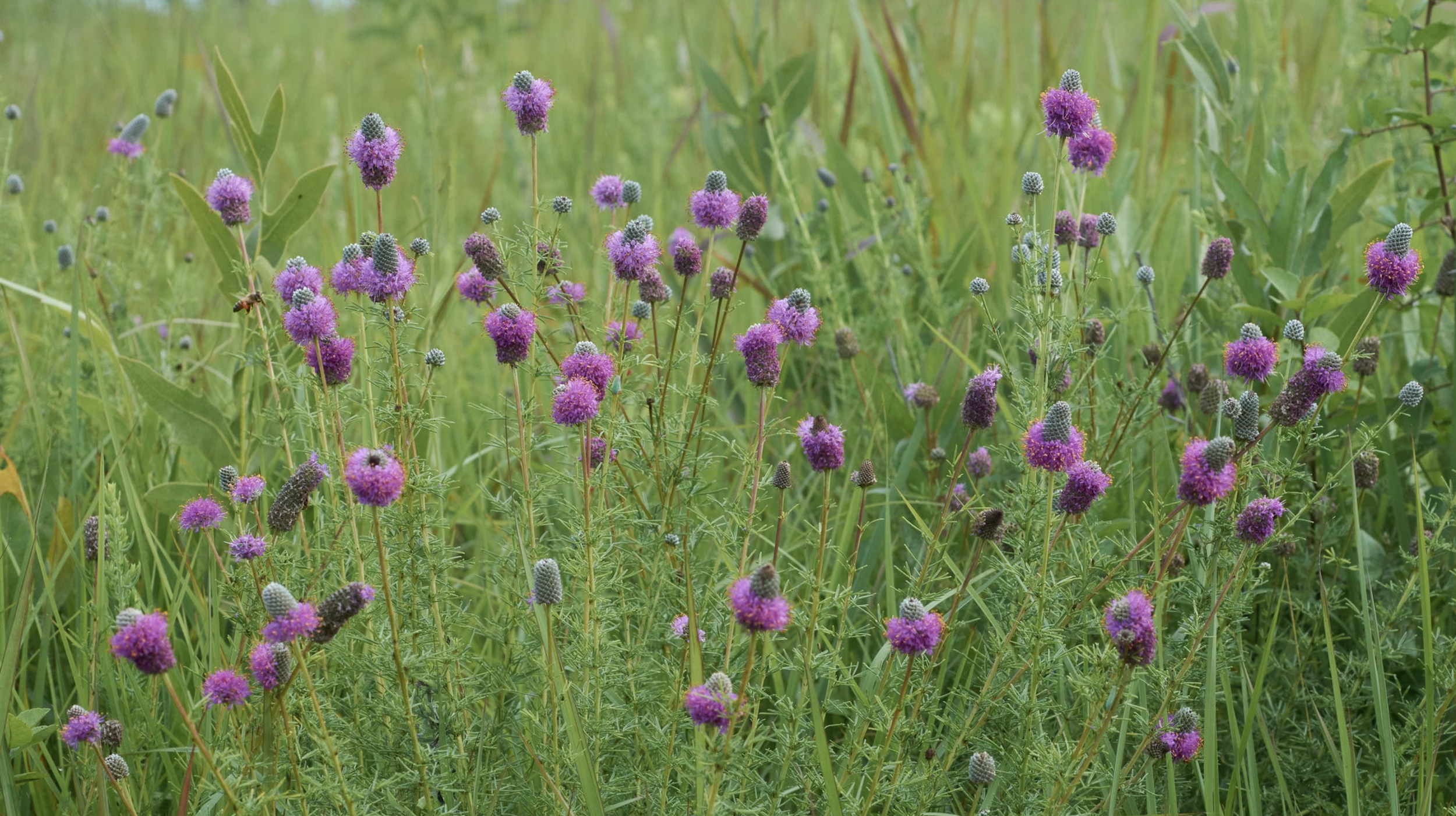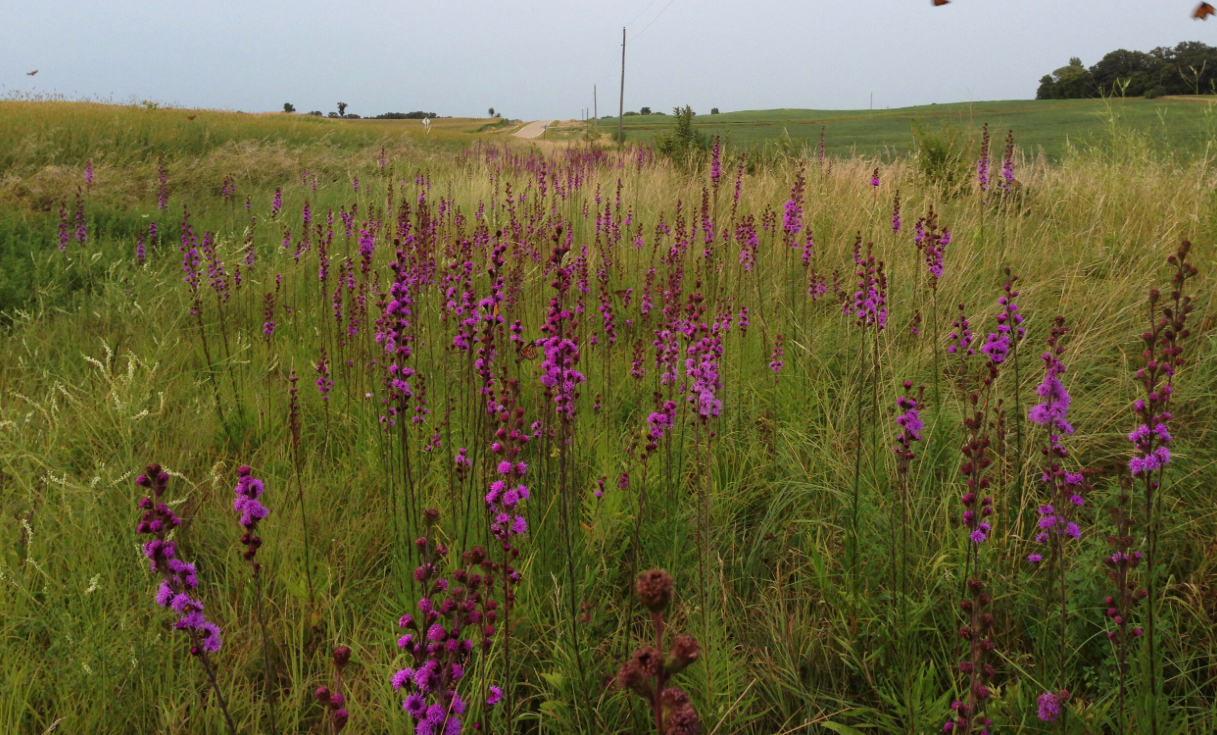By Michael Erickson
December 6, 2023
With plants at the forefront of most of our designs at Tree of Life, a select few always stand out to us at the end of our planting season. We are constantly looking for new species and cultivars to utilize in our designs, and we wanted to share our top five favorites from the past year.
Eragrostis spectabilis
One of our favorite grasses to use this year, Eragrostis spectabilis or purple lovegrass is a gorgeous warm season grass, with a vibrant purple inflorescence. Tolerant of a variety of conditions including drought and heat, Eragrostis thrives in many native inspired and xeric gardens, offering a native and earlier blooming supplement to Muhlenbergia reverchonii. With such a delicate seedhead, its smoky texture billows when planted in droves and feathers into its surrounding plants. Given its aptitude for the Colorado landscape, it readily self-seeds to fill in empty spaces in the garden without displacing the less competitive plants. Altogether, Eragrostis spectabilis is well-equipped for our climate, it has a dynamic growth pattern, and provides a delicate but colorful texture to the garden.
Artemisia abrotanum ‘Leprechaun’
Texture is a key piece in our designs and the discovery of the Leprechaun Artemisia has provided us with a great new texture that will thrive in multiple conditions. It is dense and compact, with a lime green color and a feathery, fearn-like texture. With tree growth, garden maturity, or general change in the garden, we want to use plants that will thrive even if their conditions change and the Leprechaun does just that. With its rigid form, we have utilized this artemisia as a structural element in our designs, similar to that of a boxwood without the water requirements. Tolerant of sun and shade, and low moisture, we look forward to seeing it mature in our gardens from this past year, and to using it in designs in the coming years.
Atriplex canescens
Sometimes referred to as Chamiso or Fourwing Saltbush, Atriplex canescens is a true native to the great plains. With an ambiguous form, Atriplex may grow low to the ground and spread, or may remain more compact and take a traditional shrub form. Silvery foliage throughout the growing season produces fruits that have four wing-shaped seeds giving Atriplex its common name. We love its unique seed head and irregular growth pattern and have used it intermingled with shorter grasses. Tolerant of a variety of soil conditions especially high-stress areas and requiring very little water, Atriplex is a staple plant for high stress and low water environments.
Dalea purpurea
Year after year we continue to be amazed that Dalea purpurea or Purple Prairie Clover is a native plant and not cultivated specimen with its bright purple thimbles and fanciful appearance. Prairie flowers are often considered insignificant or underwhelming, but Dalea purpurea packs a punch in its relatively modest form. Growing in a vase shaped form, exploding into fluffy purple puffs. Beyond floriferous interest, Dalea purpurea’s foliage is needle like, offering textural interest even before its bloom mid summer. Blooming around the same time as Asclepias tuberosa, we love the intense variation of color and form. As a member of the Linaceae family, a long taproot and mycorrhizal fungi below the surface increase the soil health of the landscape.
Liatris ligulistylis
Yet another rather flamboyant prairie plant, L. ligulistylis, sometimes called Meadow Blazing Star, maintains all the features of the genus but its flowers are much more conspicuous than its other native cousins like L. spicata. Growing up to five feet tall, bright fuchsia spikes stand out not only to us, but also and especially to butterflies and pollinators. We love utilizing this liatris as a strong vertical accent in our gardens, towering over shorter perennials. A vibrant and floriferous native plant, this Liatris brings height, dimension, and fun to many of our designs.





